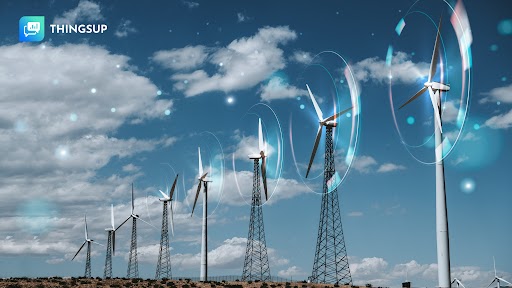Using renewable energy is no longer just a dream; it is happening with the help of technology. As the climate changes and the reserves of fossil fuels decrease, the world is moving towards clean energy sources. The Internet of Things (IoT) energy monitoring system is at the heart of this energy transition. It is an impressive technological achievement that is changing how we make, share, and use energy.
According to a report by Ericsson, there are many positive changes in the IoT industry. It can reduce carbon emissions by upto 15% by 2030.
If we talk about the energy market, then the global market for the Internet of Things (IoT) in energy was worth US$ 44.70 billion in 2022. It’s projected to reach US$ 133.3 billion by 2032 after growing at a rate of 11.60% per year from 2023 to 2032.
Today, in this blog, we will talk about how the Internet of Things (IoT) is changing the future of energy transition by looking at its effects, uses, and possible futures.
Introduction to IoT in Energy Transition
The Internet of Things (IoT) is a group of devices that are all linked together and may communicate with each other and share data in real-time.
IoT devices and sensors can be very helpful in the energy sector. Using them, organizations can track, analyze, and improve how energy use across many platforms. When IoT is used in energy systems, it produces unique data sets that help both energy providers and consumers make decisions based on data that improve efficiency, lower costs, and support sustainability.
What Is an IoT Energy Monitoring System?
An IoT energy monitoring system is a complete way to track, analyze, and control how much energy use. In this whole IoT energy monitoring system, there are IoT devices, sensors, and software. These systems get data in real-time from different sources like solar panels, wind turbines, and regular power lines. This data is later used to figure out how much energy is generated from which source and how it can be used in the best possible way.
This figure describes the idea of using solar energy to power a building and smartly controlling how much electricity it uses utilizing the Internet of Things. A wireless network connects the sensors and switches of each appliance (in this case, the lighting system) to a central computer. Many types of effective short-range wireless technologies can be used for the connections, including Ethernet cables. Besides storing data, the server also handles functions and controls the power.
The Future of Energy Transition with IoT
Based on the information in the first paragraph, the Internet of Things is still being slowly integrated into the energy sector. Better IoT technology will make it easier to connect more things, and it will have a bigger impact on how we switch to clean energy in the future.
Smart Cities and IoT
The energy transition is closely tied to the idea of “smart cities.” IoT will help smart cities and smart towns to control energy usage better. Along with this, it will also support reducing carbon footprints and will encourage people to live in a way that is good for the environment.
Components of a Smart City with IoT:
Smart Grids: When IoT is integrated with the city’s energy system, a more reliable and efficient energy network can be established.
IoT Energy Monitoring Systems: IoT energy management system will provide real-time information to know how much power is being used in the smart city, which helps with management and efficiency.
Renewable Energy Integration: Integrating green energy means making it easier for people to use renewable energy sources in cities.
Improved Energy Storage Solutions
Energy storage is a vital part of getting energy when it’s needed the most. Renewable sources such as wind and solar do not produce the same amount of energy at all times. In this, the stored energy comes in handy when needed. Integrating IoT energy tracking systems into energy storage solutions makes them much more reliable, efficient, and scalable.
Key Contributions of IoT to Energy Storage Solutions:
Real-Time Monitoring and Control: IoT devices constantly check the health, temperature, and level of charge of energy storage systems. This way, the charging and discharging process can be controlled, which also improves the life of the battery.
Predictive Analytics for Maintenance: IoT energy monitoring systems use predictive analytics that can detect potential issues such as battery degradation or failure ahead of time. Thus, it helps in reducing maintenance costs.
Dynamic Energy Management: IoT provides dynamic management of energy storage in which the system automatically responds to fluctuations in energy demand and supply.
Decentralized Energy Systems
Decentralized energy systems, in which energy is made and used locally, may be the way of the future for the energy transition. When these decentralized systems are managed, IoT will be very important for making sure that energy is used efficiently and in a way that doesn’t harm the environment.
Benefits of Decentralized Energy Systems
Reduced Transmission Losses: When energy is generated closer to the point of consumption, the losses in energy transmission will also be reduced, which will improve overall efficiency.
Energy Resilience: The risk of large-scale outages in decentralized systems is significantly low or almost nil.
Community Empowerment: Local communities can optimize or control their energy needs and can significantly reduce their dependence on fossil fuels.
Conclusion
The more progress there is in IoT technology, the greater the energy transition will be in the future. As we move towards a more environment-friendly energy future, IoT energy monitoring system are becoming increasingly important for us to reduce waste and incorporate renewable energy sources. With the help of IoT systems, we can speed up our move to a future that has cleaner, greener, and more stable energy.







